Normunds Grūzītis
Extracting Formal Models from Normative Texts
Jun 15, 2017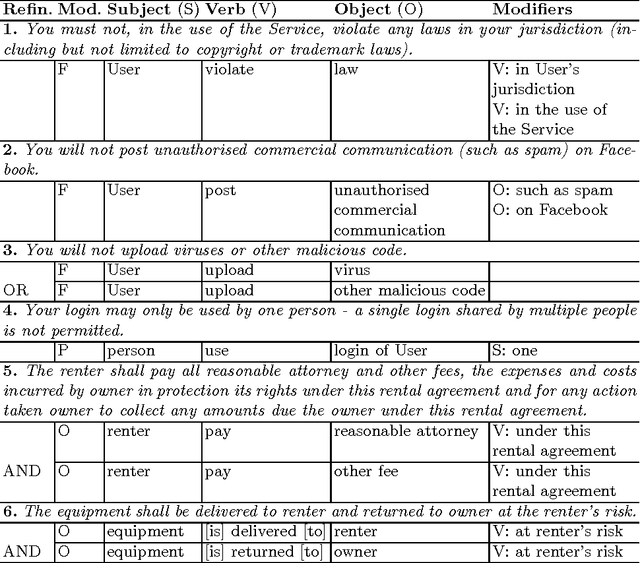

Abstract:We are concerned with the analysis of normative texts - documents based on the deontic notions of obligation, permission, and prohibition. Our goal is to make queries about these notions and verify that a text satisfies certain properties concerning causality of actions and timing constraints. This requires taking the original text and building a representation (model) of it in a formal language, in our case the C-O Diagram formalism. We present an experimental, semi-automatic aid that helps to bridge the gap between a normative text in natural language and its C-O Diagram representation. Our approach consists of using dependency structures obtained from the state-of-the-art Stanford Parser, and applying our own rules and heuristics in order to extract the relevant components. The result is a tabular data structure where each sentence is split into suitable fields, which can then be converted into a C-O Diagram. The process is not fully automatic however, and some post-editing is generally required of the user. We apply our tool and perform experiments on documents from different domains, and report an initial evaluation of the accuracy and feasibility of our approach.
Towards Self-explanatory Ontology Visualization with Contextual Verbalization
Jul 06, 2016

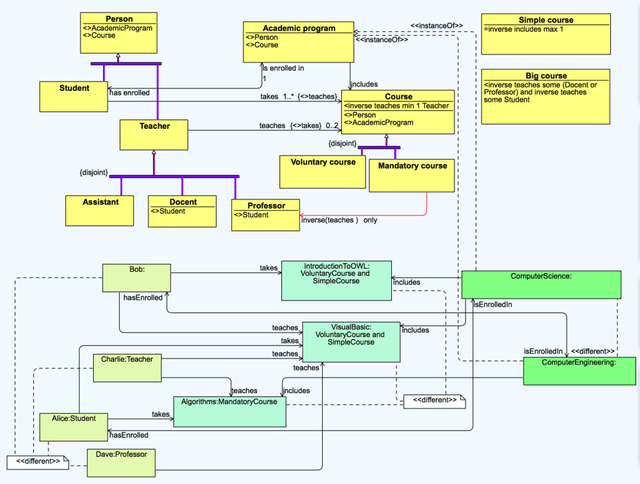

Abstract:Ontologies are one of the core foundations of the Semantic Web. To participate in Semantic Web projects, domain experts need to be able to understand the ontologies involved. Visual notations can provide an overview of the ontology and help users to understand the connections among entities. However, the users first need to learn the visual notation before they can interpret it correctly. Controlled natural language representation would be readable right away and might be preferred in case of complex axioms, however, the structure of the ontology would remain less apparent. We propose to combine ontology visualizations with contextual ontology verbalizations of selected ontology (diagram) elements, displaying controlled natural language (CNL) explanations of OWL axioms corresponding to the selected visual notation elements. Thus, the domain experts will benefit from both the high-level overview provided by the graphical notation and the detailed textual explanations of particular elements in the diagram.
Controlled Natural Language Generation from a Multilingual FrameNet-based Grammar
Jun 10, 2014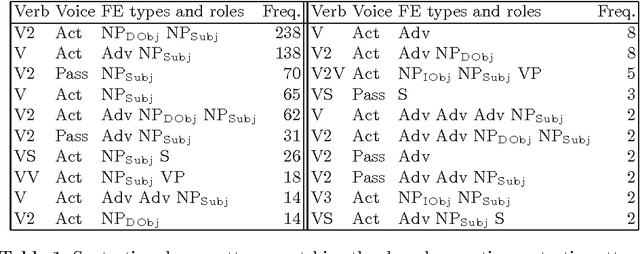
Abstract:This paper presents a currently bilingual but potentially multilingual FrameNet-based grammar library implemented in Grammatical Framework. The contribution of this paper is two-fold. First, it offers a methodological approach to automatically generate the grammar based on semantico-syntactic valence patterns extracted from FrameNet-annotated corpora. Second, it provides a proof of concept for two use cases illustrating how the acquired multilingual grammar can be exploited in different CNL applications in the domains of arts and tourism.
Extracting a bilingual semantic grammar from FrameNet-annotated corpora
Apr 08, 2014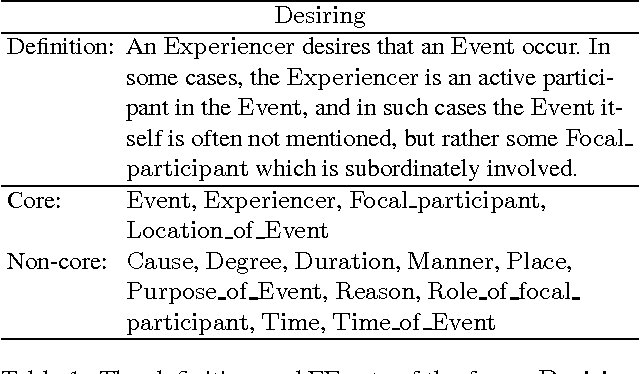

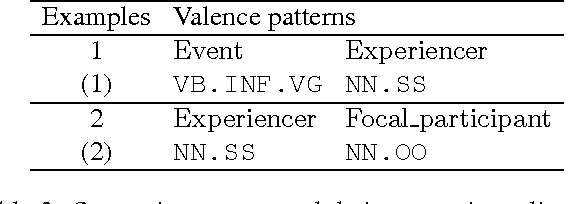

Abstract:We present the creation of an English-Swedish FrameNet-based grammar in Grammatical Framework. The aim of this research is to make existing framenets computationally accessible for multilingual natural language applications via a common semantic grammar API, and to facilitate the porting of such grammar to other languages. In this paper, we describe the abstract syntax of the semantic grammar while focusing on its automatic extraction possibilities. We have extracted a shared abstract syntax from ~58,500 annotated sentences in Berkeley FrameNet (BFN) and ~3,500 annotated sentences in Swedish FrameNet (SweFN). The abstract syntax defines 769 frame-specific valence patterns that cover 77.8% examples in BFN and 74.9% in SweFN belonging to the shared set of 471 frames. As a side result, we provide a unified method for comparing semantic and syntactic valence patterns across framenets.
Verbalizing Ontologies in Controlled Baltic Languages
Nov 02, 2012
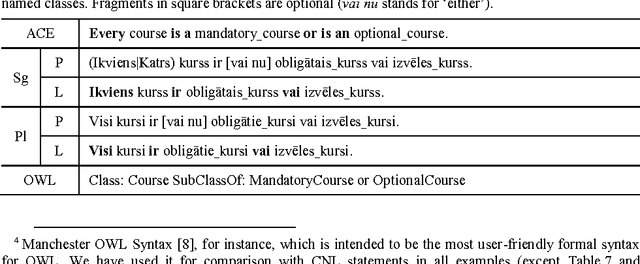


Abstract:Controlled natural languages (mostly English-based) recently have emerged as seemingly informal supplementary means for OWL ontology authoring, if compared to the formal notations that are used by professional knowledge engineers. In this paper we present by examples controlled Latvian language that has been designed to be compliant with the state of the art Attempto Controlled English. We also discuss relation with controlled Lithuanian language that is being designed in parallel.
 Add to Chrome
Add to Chrome Add to Firefox
Add to Firefox Add to Edge
Add to Edge